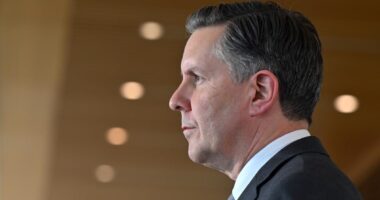The U.S. economy expanded at an annual rate of 1.4% from January to March, marking the slowest quarterly growth since spring 2022, as reported by the Associated Press. This revised figure from the Commerce Department is slightly higher than the previously estimated 1.3%. According to Xinhua, the upward revision is attributed to a decrease in imports and increased nonresidential fixed investment and government spending.
The first quarter’s growth represents a significant slowdown compared to the 3.4% rate in the last quarter of 2023. Paul Wiseman from the Associated Press noted that the decline was largely due to a surge in imports and a drop in business inventories, which do not necessarily reflect the economy’s underlying health. Consumer spending, which grew at a modest 1.5% rate, also showed a decline from an initial estimate of 2%, indicating the impact of high interest rates.
Business investment provided some positive news, rising at a 4.4% annual pace, up from the previous estimate of 3.2%, driven by increased investment in factories, nonresidential buildings, and intellectual property. According to the AP, spending on goods like appliances and furniture fell, while spending on services such as travel and dining out increased.
Chris Zaccarelli, chief investment officer for the Independent Advisor Alliance, called the downshift in consumer spending “a cause for concern,” emphasizing the crucial role consumers play in the economy. Gregory Daco, chief economist at EY, remarked that while the economy showed resilience, private-sector demand growth was cooling, with more cautious consumer behavior.
Economists had anticipated stronger growth in the current quarter, but an Oxford Economics model now predicts a tepid 1.3% growth rate. Despite higher interest rates intended to curb inflation, the economy has avoided recession, continuing to grow albeit at a slower pace, and employers have continued to hire. The unemployment rate in May stood at 4%, even as the nation added 272,000 jobs.
Inflation has decreased from a peak of 9.1% in 2022 to 3.3%, though it remains above the Federal Reserve’s 2% target. The Fed, which raised interest rates 11 times in 2022 and 2023, now predicts only one rate cut this year, down from an earlier forecast of three cuts. Desmond Lachman from the American Enterprise Institute suggested to Xinhua that the Fed might delay rate cuts until November, possibly risking a recession.
The Commerce Department’s report is the final estimate of first-quarter GDP growth, with the next estimate for the current quarter due on July 25.





